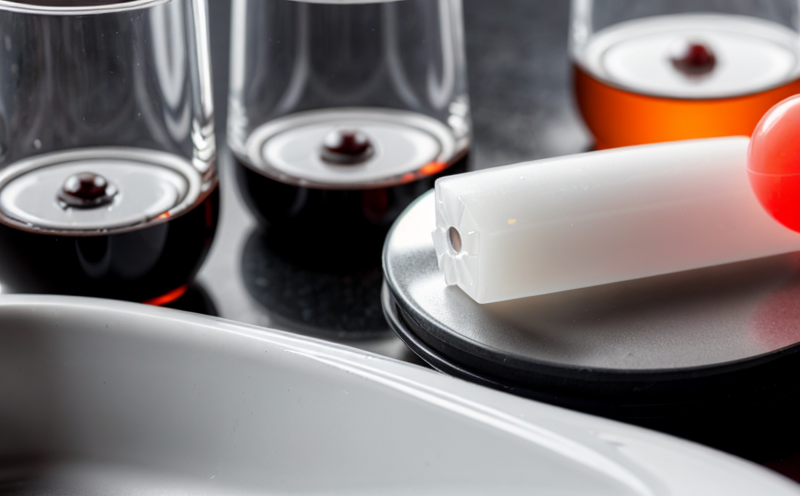ISO 13320 Nanoparticle Size Distribution by Laser Diffraction
The ISO 13320 standard provides a robust method for determining the size distribution of nanoparticles using laser diffraction. This technique is widely used across various sectors including pharmaceuticals, electronics, and environmental sciences due to its precision and efficiency.
By employing a laser beam that interacts with particles suspended in fluid, this method measures how the beam scatters at different angles. The intensity of scattered light correlates directly with particle size. This non-destructive approach allows for real-time analysis without altering the sample's properties. The result is a detailed size distribution histogram which can help in understanding the physical characteristics and behavior of nanoparticles.
The ISO 13320 method is particularly advantageous because it offers high accuracy over a wide range of particle sizes, from submicronic to several microns. This versatility makes it suitable for diverse applications where precise characterization of nanoparticle size distribution is essential. It’s also notable that this technique can be applied to a variety of sample types including liquids and suspensions.
The process involves several key steps: preparation of the sample, calibration of the instrument, measurement of the sample, and subsequent data analysis. Sample preparation typically includes dispersing nanoparticles in a suitable solvent or carrier fluid before introducing them into the laser beam path. Calibration ensures that the instrument accurately measures particle size. During measurement, particles are illuminated by the laser, and their scattered light is collected by a detector array. The resulting data is then processed to generate a histogram representing the distribution of particle sizes.
Instrumentation for ISO 13320 testing includes advanced laser diffraction instruments that provide reliable measurements. These devices come equipped with sophisticated software capable of interpreting raw data into meaningful size distributions. Reporting involves presenting this information in graphical form, often alongside statistical descriptors such as mean diameter and standard deviation.
- Preparation: Ensuring the sample is properly dispersed to avoid agglomeration or settling
- Data Analysis: Utilizing software that fits the collected data points to theoretical particle size distributions
The importance of this testing cannot be overstated, especially in fields like nanomedicine where the precise control over nanoparticle size is critical for therapeutic effectiveness. Understanding the size distribution allows for optimization of drug delivery systems and ensuring compliance with regulatory standards.
Given the complexity and precision required, it’s crucial to work with experienced laboratories that specialize in this type of testing. They can provide accurate results tailored to specific industry needs, ensuring confidence in the integrity of your research or production processes.
Industry Applications
- Nanomedicine: Ensuring that drug delivery systems are effective and safe
- Metallic Nanoparticles: Quality control in electronics manufacturing
- Solvent-Based Nanocomposites: Optimizing material properties for various applications
- Environmental Science: Monitoring the dispersion of nanoparticles in air or water
This testing method is indispensable in these and other sectors where the precise characterization of nanoparticle size distribution plays a pivotal role. Its ability to provide accurate, repeatable results across diverse sample types makes it an essential tool for researchers and industry professionals.
Why Choose This Test
- Precision: High accuracy over a wide range of particle sizes
- Efficiency: Non-destructive measurement allowing real-time analysis
- Versatility: Suitable for various sample types including liquids and suspensions
- Regulatory Compliance: Ensures adherence to international standards like ISO 13320
Selecting this method ensures that you are obtaining reliable, reproducible data which is critical for maintaining quality control in your production processes. The ability to accurately characterize nanoparticles contributes significantly to the development of safer and more effective products.
Use Cases and Application Examples
In nanomedicine, understanding the size distribution of drug-delivery nanoparticles is crucial for optimizing their efficacy. Smaller particles can penetrate tissues more effectively, while larger ones may enhance stability and reduce toxicity.
In electronics manufacturing, metallic nanoparticles are used in the production of high-performance components like transistors. Precise control over nanoparticle size ensures optimal performance and reliability.
Solvent-based nanocomposites find application in various industries ranging from coatings to composites for aerospace. Here, accurate characterization helps in optimizing material properties and ensuring consistent quality.
Environmental science benefits significantly from this testing method by monitoring the dispersion of nanoparticles in air or water. This is particularly important in assessing potential environmental impacts and developing effective remediation strategies.





